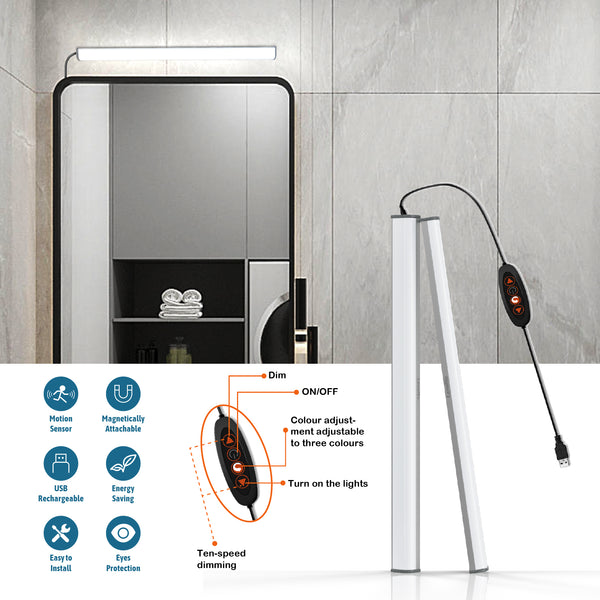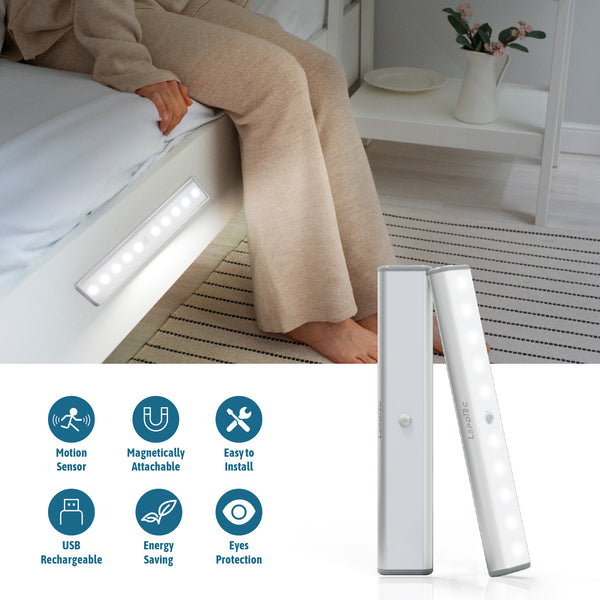Making your home safe at night might seem complicated, but it's easier than you think with motion sensor lighting. These lights turn on automatically if someone walks by, making sure that no corner stays dark when you need to see. They work by sensing heat fluctuations, so whether it's a visitor or a stray animal, you'll know if there's movement outside. Pair them with a burglar alarm, and you've got a powerful team working to keep your home safe. In this guide, we'll show you how these lights work, the different types available, and where to place them for the best security.

How Motion Sensor Lights and Alarms Keep Your Home Safe
Motion sensor lights are like your home's own security guards. They don't just light up your yard; they keep an eye out for you, too. Here's how they work simply:
●These smart lights have what's called PIR sensors. Imagine them as special eyes that can sense when the temperature changes because of something moving, like a person or pet. When they spot this movement, they switch on the lights.
Plus, some of these lights team up with burglar alarms for even better home protection. Here's what happens:
●If the sensors notice someone sneaking around where they shouldn't be, the alarms can blast a loud noise to scare them off or even send a message to your phone. This tag-team action works great because the sudden light can make thieves think twice about sticking around, while at the same time, you get a heads-up that there's something fishy going on.
What Are the Different Types of Motion Sensors Used in Security Lights?
| Sensor Type | How it Detects | Detection Range | False Alarm Rate | Ideal Use Case |
| Passive Infrared (PIR) | Detects changes in infrared heat signatures |
15-20 feet | Low | Home use, small to medium areas |
| Microwave (MW) | Transmits microwave pulses, detects reflection changes |
Up to 30 feet | Higher | Large, open areas |
| Dual Technology | Combines PIR and MW technologies | 15-30 feet | Very low | High-security areas, reducing false alarms |
Key Points:
●PIR sensors are great for homes because they're good at spotting living things like people and pets due to their body heat, and they don't get tricked easily.
●MW sensors can watch over bigger areas, but sometimes they get a bit jumpy and set off an alarm when there's no real reason.
●Using both PIR and MW sensors together means you get the best of both worlds: fewer mistakes and better detection.
●Choosing the right kind of sensor depends on what you need to protect and how big the space is, so you get the best results.
How to Use Motion Sensor Lights to Make Your Home Safer
Putting your motion sensor lights in the right places can be a game-changer for home safety. It's like setting up a chessboard—you want to cover all the important spots so that intruders have nowhere to hide. Here are some key areas to light up:
●Entryways: Shine a light on anyone coming to your front or back door. This way, you and your friends can see clearly, and it sends a clear message to potential intruders that they're on stage.
●Hidden Corners and Pathways: Light up those sneaky spots and walkways around your home. Safe paths mean no tripping in the dark, and sneaky spots won't be so sneaky anymore if they're well-lit.
●Up High: When you place lights higher up, they can see more. Think of them as lookout towers, keeping an eye on everything below.
By smartly placing your motion lights, you create a bright boundary around your home, scaring off bad guys and giving you a sense of security when the sun goes down. It's like having a silent, watchful protector looking out for you all night long.
What Can Go Wrong with Motion Sensor Lights?
Motion sensor lights are super handy, but sometimes they act up. Here's what can mess with their heads:
●Mistaken Movements: Sometimes things that shouldn't set off your lights do—like branches waving around or a stray cat zipping past. This can light up your backyard like a football stadium and might bug your neighbors.
●Bad Weather: Believe it or not, a big storm with lightning or heavy rain can make your motion lights think there's an intruder when it's just Mother Nature doing her thing.
●Random Glitches: They're rare, but now and then, a little hiccup in the system can cause lights to flick on or not work when they should. Even top-notch gadgets can slip up occasionally.
Knowing these issues helps you stay ahead of the game. You can figure out ways to fix them or have a backup plan ready, so you keep your home safe no matter what surprises come your way.
How to Make Your Motion Sensor Work Better for You
Getting your motion sensor's settings just right can make a big difference. It's all about making sure it works well without bothering you with false alarms. Here's how to adjust it for the best results:
●Coverage Area: Change how far your sensor reaches so it doesn't pick up movement that's not important, like cars on the street. Instead, it'll focus on the areas you care most about.
●Sensitivity: Tweak it so that it can tell the difference between a cat running by and someone trying to sneak in. This way, it only alerts you when it matters.
●Light Timing: Decide how long the lights should stay on after they detect movement. Find a good middle ground between keeping your place secure and saving energy.
By getting these settings just right, you'll have a security system that fits your space perfectly and keeps you safe without any extra fuss.
Secure Your Night: Activate Your Home's Safety with Motion Lights
Motion sensor lights are simple yet powerful allies for home safety. They automatically turn on when they detect movement, helping your alarm system to make your home more secure. You can pick the type of motion sensor that suits your needs, install them where they'll be most effective, and adjust their settings for the best performance. Yes, sometimes they might switch on because of an animal or bad weather, but you can tweak their sensitivity to reduce these incidents. Ultimately, these lights are about more than just visibility; they give you a lasting sense of security throughout the night. When they light up, it's a sign that your home is being actively monitored and protected.























